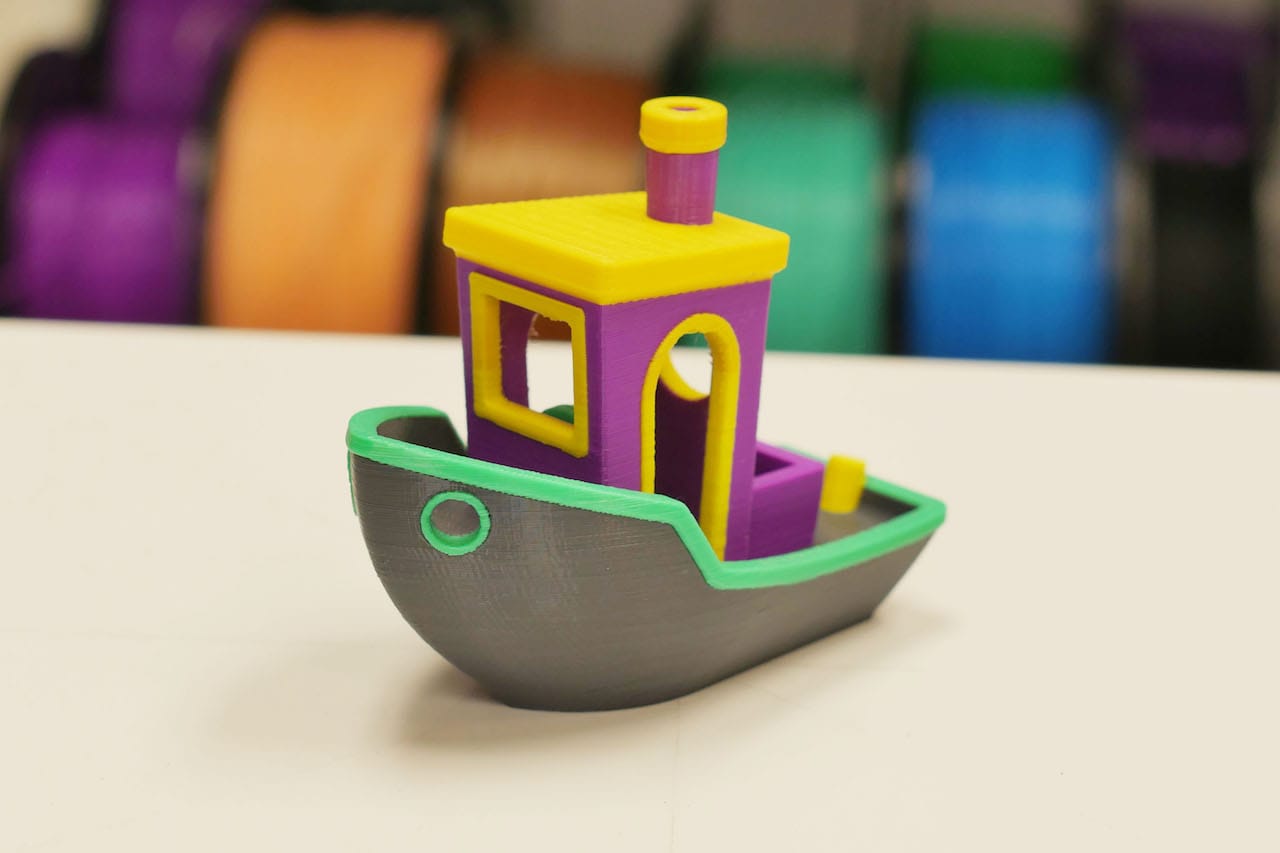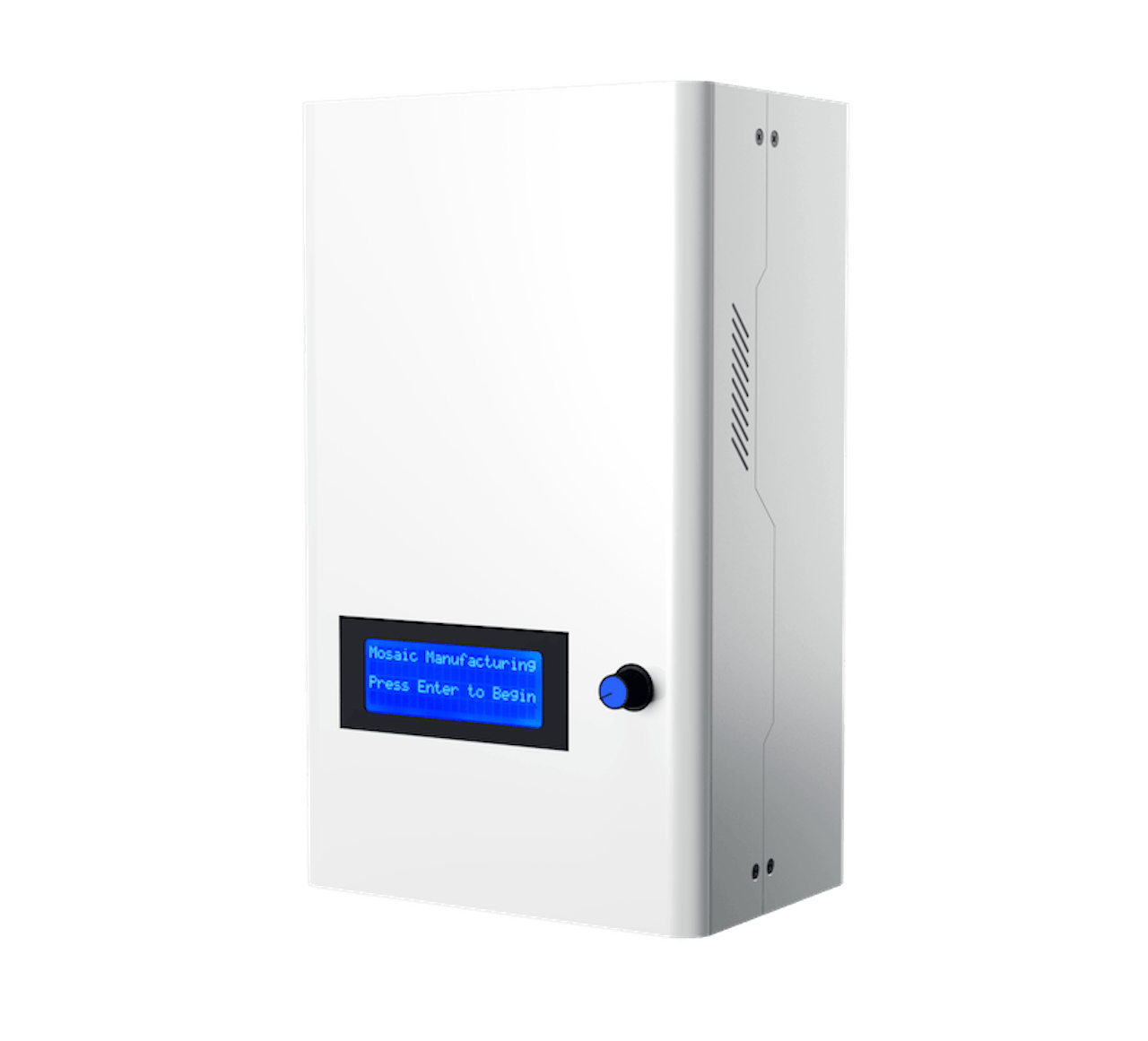
There are multiple ways to achieve color 3D printing, and one of them is Mosaic Manufacturing’s Palette. But will it catch on?
One issue with common desktop 3D printers is that they are extremely constrained when it comes to colors. You can have any color you want, as long as that’s what’s loaded up on the spool, they say. Most machines can print only one color at a time, although there are a few machines offering dual extruders for two colors. A very few options offer more than two extruders, but they tend to be expensive or problematic.
The problem has been attacked by a some innovative vendors recently with a number of interesting approaches to providing more than one or two colors.
One of these is Canada-based Mosaic Manufacturing, whose idea is to remake the input filament on the fly to match the required colors at each stage of extrusion. They literally cut pieces from four differently colored input spools and fuse them together into a continuous colored filament. Four filaments in, one comes out to the 3D printer.

Does it work? It actually does, as you can see in the image above, which was printed by a Mosaic Manufacturing staffer. The color changes are quite crisp, as opposed to when swapping filament manually: residual colors in the extruder temporarily pollute the output plastic in a muddy mix. No such problems with the Palette.
There are some interesting advantages to this approach, the most prominent being it is usable on almost any single extruder equipped desktop 3D printer. This gives them a huge market to find color-seeking makers.
I’m wondering whether this approach can truly catch on. There are several questions to ask.
How reliable is this approach? My experience with filament-powered 3D printers is likely similar to yours: a significant amount of erroneous printing. A very high percentage of print attempts result in failures of all sorts. It seems to me that the Palette approach works well if everything executes as predicted. But if, for example, the extruder slips slightly, the color changes will be off. How often does that happen? Is it significant? I don’t know; I’d have to do some extensive testing on the Palette to find out, and it depends on the actual 3D printer you’re using.
Another question is the price. Mosaic Manufacturing sets the price of the Palette at USD$999 (and coincidentally offers free shipping at this time). That’s a fairly high price, as it may actually exceed the price of some 3D printers themselves. But it does give your device a lot more capability than before. But how many individuals would pay that much for the device?
The company sold about 257 units during their Kickstarter campaign, and apparently they’ve just finished delivering them to the backers. By the way, kudos to Mosaic Manufacturing for doing so! We have had far too many Kickstarter failure stories on this publication recently.
There seems to be some level of demand, but it has not yet been shown to be at large scale. A few hundred units among perhaps 300,000 desktop 3D printers in operation is not a big percentage. While they are making deals with resellers to market the device in stores, online and bundled with 3D printers, they have yet to show large demand.
Finally, and this is a really fundamental question, is the matter of need.
How many people actually NEED color 3D printing? While intuitively you’d like to print in color, it requires cost and effort to do so. How many people actually need color 3D prints and are willing to take action to do so? Up to now almost all 3D printers print in single colors and operators do so without complaint. Of all the 3D printer operations in the world, how many need or want color?
I have no idea, but I think we are going to find out soon.

